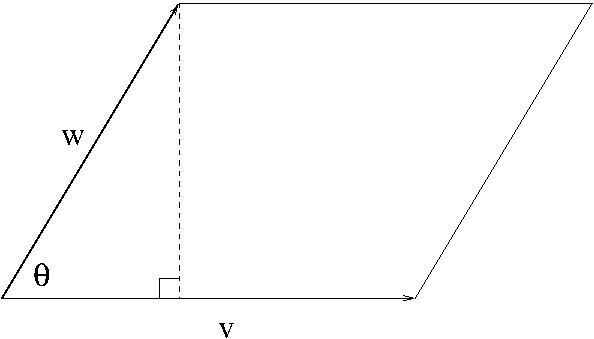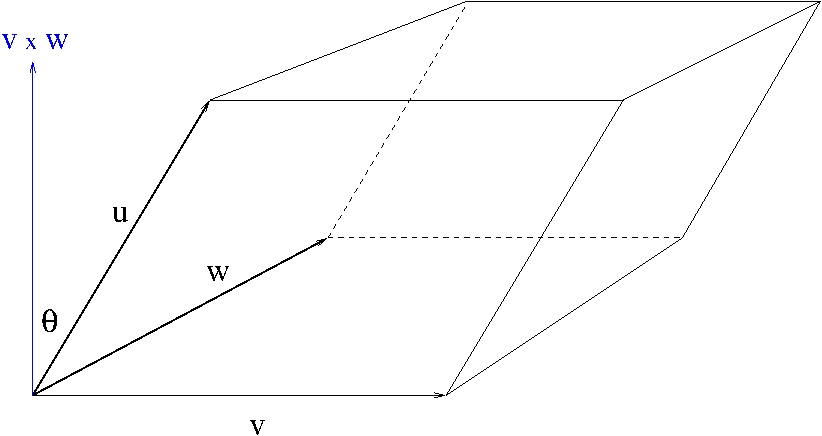The Area of a Parallelogram
Let $v=(v_1,v_2)$ and $w=(w_1,w_2)$ be two linearly independent vectors in $\mathbb{R}^2$. Then they span a parallelogram as shown in Figure 1.

Figure 1. Parallelogram spanned by two vector v and w.
The area $A$ of the parallelogram is
\begin{align*}
A&=||v||||w||\sin\theta\\
&=||v\times w||\\
&=\left|\begin{array}{cc}
v_1 & v_2\\
w_1 & w_2
\end{array}\right|.
\end{align*}
In general, the resulting determinant is not necessarily positive. If it is negative, we need to take the absolute value of the determinant for the area.
Exercise. Given two vectors $v=(v_1,v_2,v_3)$ and $w=(w_1,w_2,w_3)$ in $\mathbb{R}^3$, show that $||v||||w||\sin\theta=||v\times w||$ where $\theta$ is the angle between $v$ and $w$.
Hint. Note that $||v||^2||w||^2\sin^2\theta=||v||^2||w||^2-(v\cdot w)^2$.
The Volume of a Parallelepiped
Let $u=(u_1,u_2,u_3)$, $v=(v_1,v_2,v_3)$, $w=(w_1,w_2,w_3)$ be three linearly independent vectors in $\mathbb{R}^3$. Then they span a parallelepiped as shown in Figure 2.

Figure 2. Parallelepiped spanned by vectors u, v and w.
The volume $V$ of the parallelepiped is
\begin{align*}
V&=||u||\cos\theta ||v\times w||\\
&=u\cdot (v\times w)\\
&=\left|\begin{array}{ccc}
u_1 & u_2 & u_3\\
v_1 & v_2 & v_3\\
w_1 & w_2 & w_3
\end{array}\right|.
\end{align*}
In general, the resulting determinant is not necessarily positive. If it is negative, we need to take the absolute value of the determinant for the volume.
